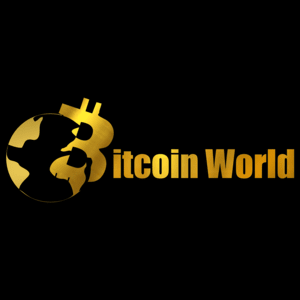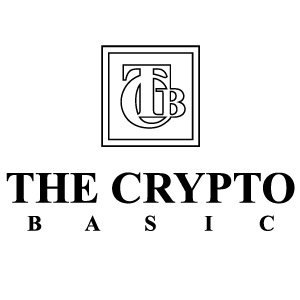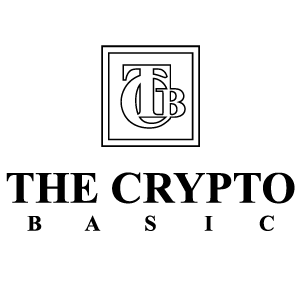South Korea Central Bank Issues Crucial Warning on Currency Volatility
6 min read
For those navigating the dynamic world of cryptocurrency, understanding macro-economic signals is crucial. The stability, or instability, of traditional currencies like the Korean Won can ripple through global markets, influencing investor sentiment and capital flows. Recently, the Bank of Korea , the central bank of South Korea , issued a notable statement anticipating ongoing currency volatility . This forecast is more than just technical jargon; it reflects underlying pressures that could impact financial decisions across the board, including within the digital asset space. Let’s explore what this means and why it matters. Why the Bank of Korea Anticipates Ongoing Currency Volatility The central bank’s forward guidance on currency movements is based on a complex assessment of both domestic and international factors. Predicting the future path of the Korean Won is challenging due to a confluence of forces creating uncertainty in the foreign exchange market. Several key drivers contribute to this anticipated volatility: Global Monetary Policy Divergence: Major central banks around the world are on different paths regarding interest rates. While some may be considering cuts, others might maintain a tighter stance for longer. This divergence creates interest rate differentials that can significantly impact capital flows and currency valuations. Geopolitical Risks: Ongoing global tensions, trade disputes, and regional conflicts introduce unpredictability into financial markets. Events in one part of the world can quickly affect risk sentiment, leading to sharp movements in exchange rates as investors seek perceived safe havens or react to changing economic prospects. Commodity Price Fluctuations: As a major importer of energy and raw materials, South Korea ‘s economy is sensitive to changes in global commodity prices. Significant swings can affect the country’s trade balance and inflation, subsequently influencing the value of the Korean Won . Domestic Economic Performance: The pace of South Korea ‘s economic recovery, inflation trajectory, and employment data all play a role. Weaker-than-expected growth or persistent inflationary pressures can weigh on the currency. The central bank’s own monetary policy decisions, based on this domestic economic outlook , are also a primary factor influencing the Won. Capital Flows: The movement of international investment in and out of South Korea can cause rapid currency shifts. Factors like investor confidence, yield differentials, and global liquidity conditions drive these flows. Understanding these underlying causes is the first step in appreciating the central bank’s cautious stance. What Does Currency Volatility Mean for the South Korea Economy? Volatility in the Korean Won exchange rate has tangible effects on various sectors of the South Korea economy. Neither a rapidly strengthening nor weakening currency is unilaterally ‘good’ or ‘bad’; the impact depends on the context and who you ask. Potential Challenges: For Importers: A weaker Won makes imported goods and raw materials more expensive. This can increase costs for businesses relying on imports and potentially lead to higher prices for consumers, contributing to inflationary pressures. For Exporters: While a weaker Won can make exports cheaper and more competitive on the global market, high volatility makes planning difficult. Businesses face uncertainty in predicting their revenues and costs in foreign currencies. For Financial Stability: Excessive volatility can create instability in financial markets, making it harder for businesses and individuals to manage foreign exchange risk. It can also impact foreign investment decisions. Inflationary Pressures: As mentioned, a weaker currency can fuel imported inflation, complicating the Bank of Korea ‘s efforts to manage price stability. Potential Opportunities (often linked to a weaker Won): Export Competitiveness: A moderately weaker Won can boost the price competitiveness of South Korea n exports, potentially supporting economic growth in export-oriented sectors. Tourism: A weaker currency makes visiting South Korea more affordable for foreign tourists, potentially boosting the tourism sector. The Bank of Korea aims to smooth out excessive volatility, intervening in the market if necessary, but acknowledging that some degree of fluctuation is inevitable given the global environment and the country’s open economy. How Does the Bank of Korea Manage Currency Volatility? The Bank of Korea has several tools at its disposal to influence the Korean Won , although direct intervention is often used judiciously due to potential market distortions and international implications. Their primary methods include: Monetary Policy: Adjusting the base interest rate is the central bank’s main tool. Higher rates can attract foreign capital seeking better yields, potentially strengthening the Won. Lower rates can have the opposite effect. The central bank’s stance on interest rates is heavily influenced by the domestic economic outlook , including inflation and growth forecasts. Foreign Exchange Intervention: The Bank of Korea can buy or sell foreign currencies (primarily US dollars) in the open market to influence the Won’s exchange rate. Selling dollars and buying Won tends to strengthen the Won, while buying dollars and selling Won tends to weaken it. However, the effectiveness and sustainability of intervention can be limited by market size and global capital flows. Communication and Forward Guidance: Simply communicating the central bank’s assessment of the market and its intentions can influence market expectations and behavior, helping to manage volatility to some extent. The recent statement about anticipated currency volatility is an example of this. The challenge for the Bank of Korea is balancing the needs of exporters and importers, managing inflation, and maintaining financial stability in the face of external shocks. Their approach is typically measured, focusing on preventing disorderly market conditions rather than targeting a specific exchange rate level. What Does This Mean for Investors and Businesses? For businesses operating internationally or investors with exposure to South Korea n assets, the central bank’s forecast of ongoing currency volatility is a signal to remain vigilant and manage risk. Actionable Insights: Risk Management: Businesses involved in international trade should consider hedging strategies to mitigate foreign exchange risk. This could involve using forwards, futures, or options contracts. Diversification: Investors might review their portfolio exposure to assets sensitive to exchange rate fluctuations. Diversification across different geographies and asset classes can help cushion against adverse currency movements. Stay Informed: Keep a close watch on global economic data, geopolitical developments, and the Bank of Korea ‘s communications regarding their monetary policy stance and assessment of the economic outlook . Understand the Drivers: Pay attention to the factors the central bank highlights as key drivers of volatility, such as global interest rate movements and commodity prices. Even for cryptocurrency investors, understanding these traditional market dynamics is valuable. Significant currency shifts can influence the liquidity and sentiment in broader financial markets, which can sometimes spill over into the crypto space. Looking Ahead: The Economic Outlook and the Korean Won The Bank of Korea ‘s anticipation of ongoing currency volatility is intrinsically linked to its broader assessment of the economic outlook for South Korea and the global economy. The path of inflation, the strength of domestic demand, and the performance of key export markets will all influence the central bank’s future policy decisions and, consequently, the behavior of the Korean Won . Analysts will be closely watching: Future statements from the Bank of Korea on their monetary policy direction. Updates to the central bank’s economic outlook and inflation forecasts. Key economic indicators such as GDP growth, inflation rates, trade balance data, and employment figures. Developments in major trading partners’ economies and global financial markets. The central bank’s cautious tone suggests that navigating the foreign exchange market will require careful consideration and adaptation in the period ahead. Conclusion: Navigating the Waves of Currency Volatility The Bank of Korea ‘s forecast of persistent currency volatility for the Korean Won underscores the complex and interconnected nature of the global financial system. Driven by a mix of global monetary policy shifts, geopolitical tensions, commodity price swings, and domestic economic factors, this volatility presents both challenges and potential opportunities for businesses and investors alike. The central bank remains committed to monitoring the market and acting to maintain stability, but acknowledges the powerful external forces at play. For anyone involved in finance, including the burgeoning digital asset markets, staying informed about these macro-economic trends and understanding their potential impact is essential for making informed decisions and managing risk in an uncertain world. To learn more about the latest Forex market trends, explore our article on key developments shaping the Korean Won and other global currencies.

Source: Bitcoin World



